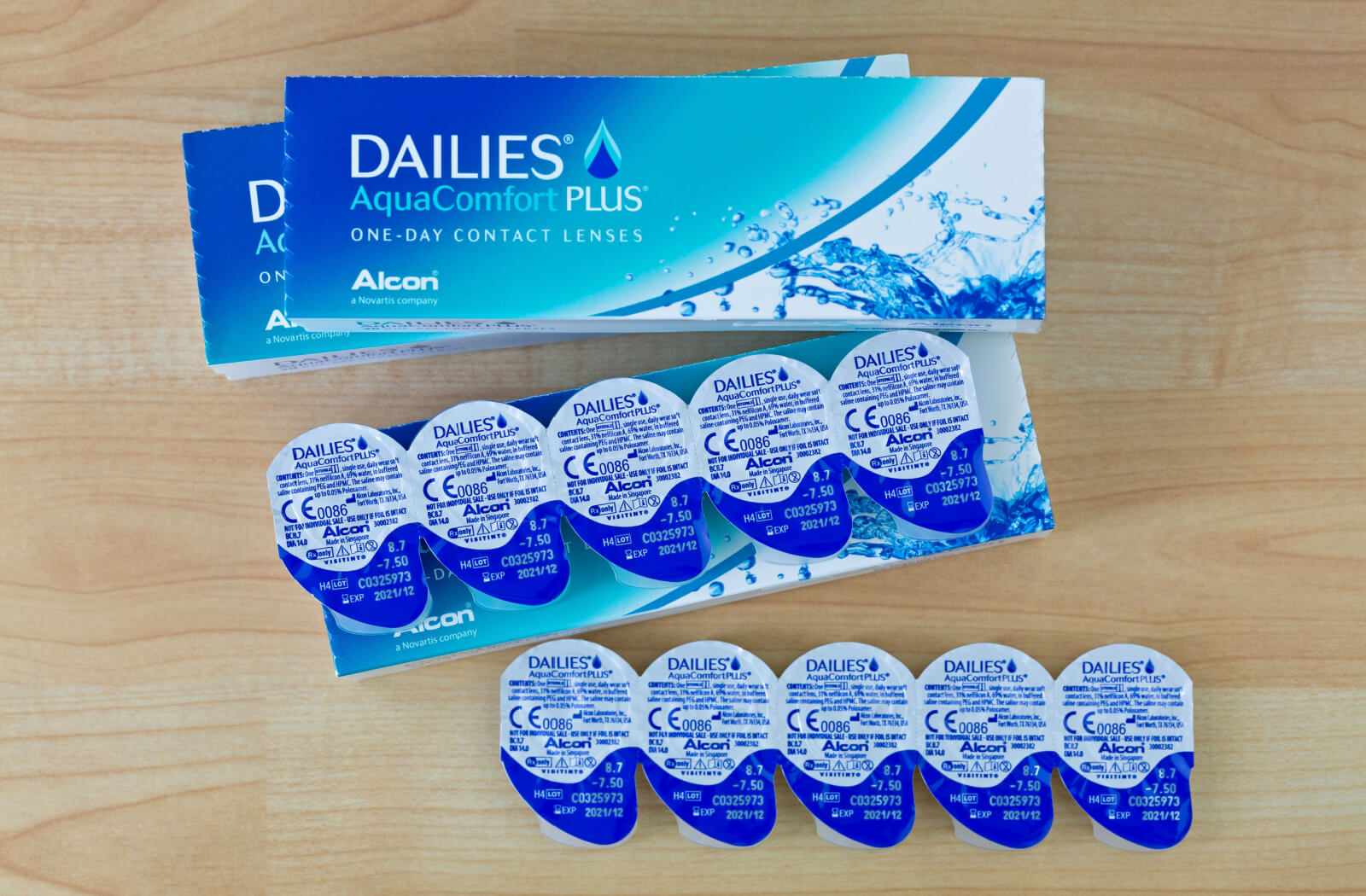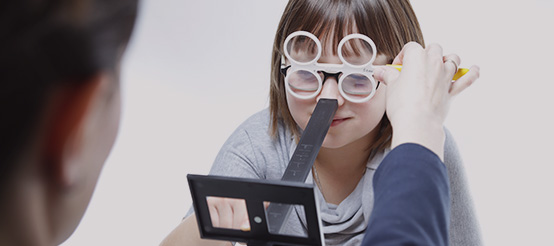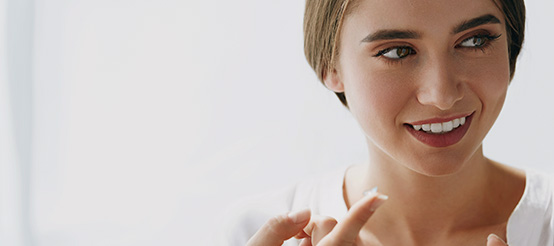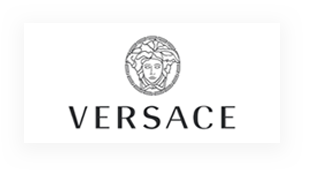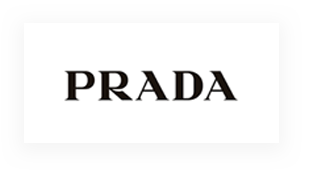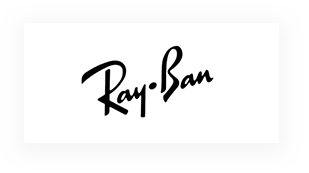It’s a common misconception that dry eyes and contact lenses are like cats and dogs—AKA, they don’t play together nicely. Sure, dry eyes indicate that the tear film meant to moisturize your eyes isn’t working as well as it should, but your dry eyes don’t have to prevent you from wearing contacts altogether. They can, however, make the process a little more complex.
Let’s take a look at some strategies for preventing dry eye symptoms while wearing contact lenses. As always, we recommend scheduling a comprehensive dry eye or contact lens appointment for the best view of your ocular health.
What Is Contact-Induced Dry Eyes?
In a few minor cases, our bodies can handle dry eye syndrome on their own. However, most people who suffer from dry eye syndrome need special treatment as it can greatly affect their quality of life. Tears are produced by glands near each eye to lubricate the eyes and keep them from drying out. But sometimes your eyes just aren’t producing enough tears, or the tears aren’t good enough quality to keep your eyes lubricated.
Dry eyes affect roughly half of contact lens wearers. Because the contact lens on the cornea can partially block oxygen from entering the eye, contact lens wearers are more likely to experience dry eyes.
Wearing contact lenses for extended periods can sometimes interfere with healthy tear production, resulting in common symptoms such as irritation, red eyes, or a “scratchy” feeling in or around the eyes, especially near the end of the day.
Some patients are more prone to dry eyes than others, and certain conditions, such as meibomian gland dysfunction (MGD), can impair the lacrimal glands’ ability to produce tears even before contact lenses are used.
Contact Lenses to Help Prevent Dry Eyes
There are several types of contact lenses available, each of which works differently with dry eyes. Here is a list of the most common contact lens types that can help with dry eyes.
- Daily disposable contact lenses
- Low water content contact lenses
- RGP lenses
- Scleral Lenses
Daily Disposable Contact Lenses
These single-day contact lenses, also known as dailies, are ideal for people who have dry eyes. Dry eye is frequently aggravated by contact lens buildup—over time, makeup, oils, and other substances can accumulate and irritate the skin.
Protein deposits don’t have time to build up and cause discomfort in dailies, and lenses don’t dry out as a result of poor cleaning habits.
Low Water Content Contact Lenses
Contact lenses are available in a variety of water content levels. It’s a common misconception that the higher a contact lens’s water content, the more comfortable it is.
Some users, especially those with dry eyes, may experience the exact opposite. Although high-water contact lenses allow more oxygen to reach the cornea, they can also draw liquid from the tear film, aggravating dry eye symptoms.
RGP Lenses
Rigid gas-permeable (RGP) lenses are made of harder plastics than soft contact lenses, but they are oxygen-permeable, allowing air to pass through and allowing your eyes to “breathe.”
They provide a better oxygen supply because the materials they are made of allow more oxygen to pass through. Scleral lenses, which are a type of rigid gas-permeable lenses, can help with dry eye symptoms.
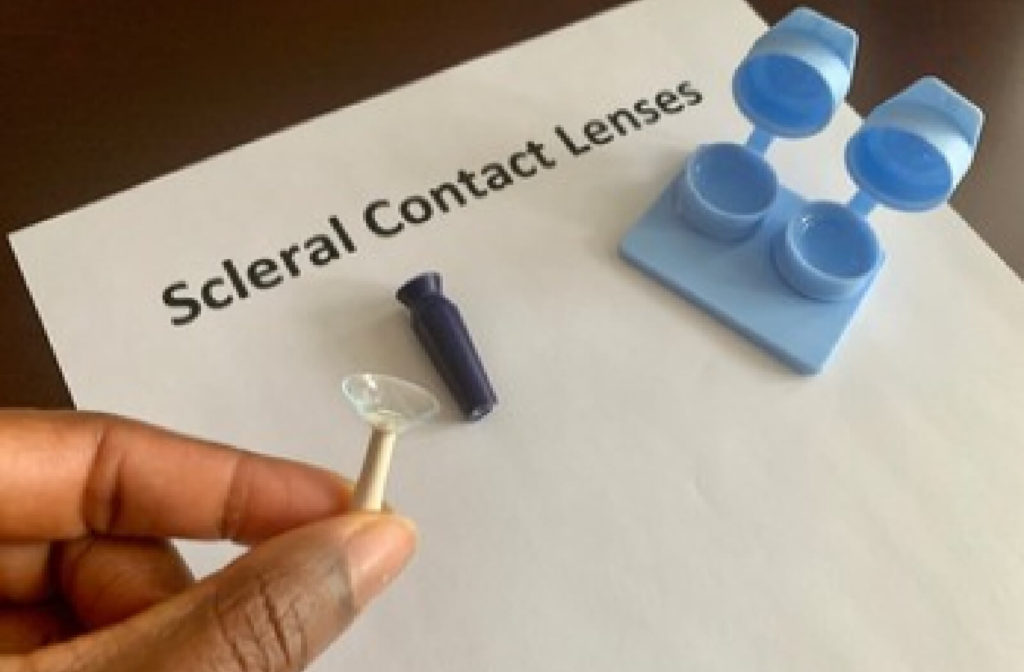
Scleral Lenses
Scleral lenses are wider than regular contact lenses. They rest on the cornea and the scleral (the white part of the eye), creating a tear-filled space. This liquid cushion has been shown to benefit many patients with dry eyes by keeping the eyes hydrated and protecting the cornea from irritants.
Other Ways to Prevent Dry Eye
Changing to a different type of contact lens is a good starting point to help relieve your dry eye symptoms, but there are several options available to help you relieve dry eye.
Maintain Your Lenses
Another critical step is to maintain your lenses. Keep them clean and replace them as directed. Wear your contact lenses only for the amount of time prescribed by your eye doctor.
Keep Your Eyes Moisturized
Before inserting your contact lenses, moisten your eyes with eye drops. Additionally, you can apply the drops throughout the day to keep your eyes moist.
Several types of eye drops are available. Over-the-counter drops, also known as artificial tears or lubricating eye drops, are available with and without preservatives.
The delicate cornea can be irritated by preservative eye drops—they are generally not advised for people who have dry eyes. Prescription eye drops can help by reducing inflammation and assisting your eyes in producing more tears.
When you’re in a dry environment, such as a heated room during the winter, you may need to use drops more frequently. If your eyes are sensitive, try an eye drop without preservatives.
Keep Your Eyes Clean
Your eye doctor may recommend in-office procedures to unclog your oil glands if you have a moderate blockage of your meibomian glands. They may also recommend an eyelid exfoliation treatment to clean the eyelids thoroughly.
Book Your Appointment
Comfortable vision while wearing contacts is the ultimate goal. If you’re experiencing dry eyes, or are looking for ways to keep your eyes moisturized while wearing contacts, book your appointment with Urban Optique. We can guide you on how best to take care of your contacts, and your vision.

